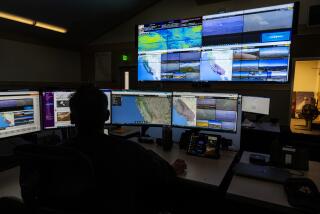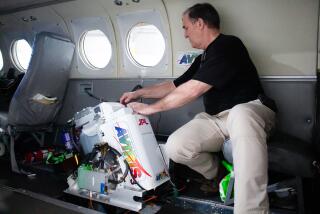Forecasting GOES a Step Ahead With Weather Satellite Launch
- Share via
KENNEDY SPACE CENTER, Fla. — The decrepit U.S. weather satellite system got a boost Wednesday with the launch of the most advanced storm-watching craft ever sent into orbit.
“We’re waiting to go to work. We just couldn’t have had a better start,” said Tom McGunigal, program manager for the National Oceanic and Atmospheric Administration.
Images should start flowing in about a month, but the satellite’s data won’t go into regular use until after six months of testing.
McGunigal called the middle-of-the-night launch “a good omen for the rest of the work that we have to do.” The first big step in orbit--partial deployment of the solar electric panel--was accomplished on cue Wednesday.
The launch should have taken place five years ago, but technical and program setbacks led to several delays.
The $220-million satellite is the first in a series of five new Geostationary Operational Environment Satellites. The satellite, bigger and more sophisticated than previous models, is expected to allow more precise tracking of hurricanes and other storms than ever before.
National Hurricane Center Director Bob Sheets said he plans to start using the new GOES a few weeks into the 1994 hurricane season but won’t rely on it until its six-month checkout is completed near the end of the season.
For the past several years, the National Weather Service and the hurricane center have had to rely on an aging GOES satellite for the Western United States and a borrowed European satellite for the East. Although working well, both spacecraft are well past their design lifetime and could stop working at any time. The new craft’s expected lifetime is 8 1/2 years.
The five new GOES planned over the next 10 years are expected to cost $1.1 billion, not including hundreds of millions of dollars in launch costs. The original cost estimate was $276 million.
More to Read
Sign up for Essential California
The most important California stories and recommendations in your inbox every morning.
You may occasionally receive promotional content from the Los Angeles Times.










